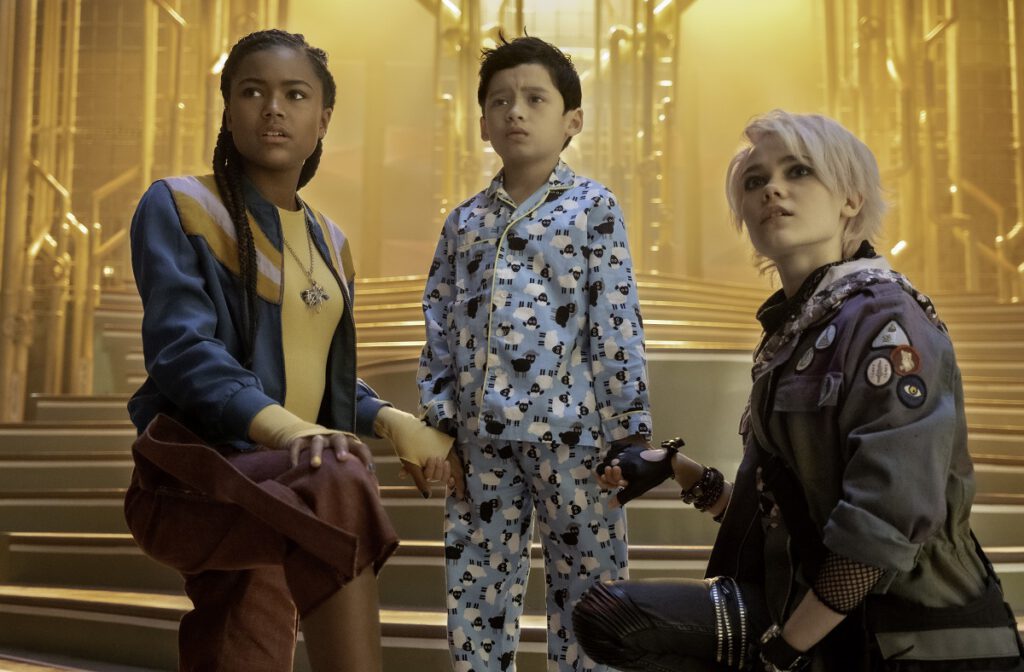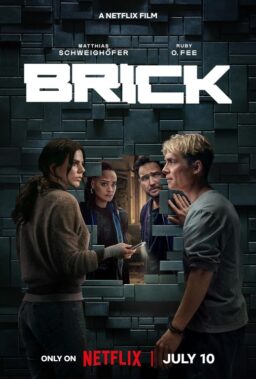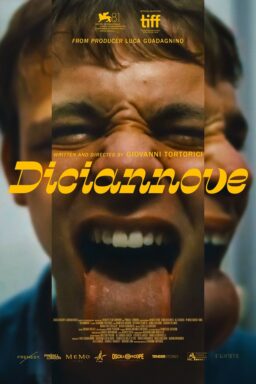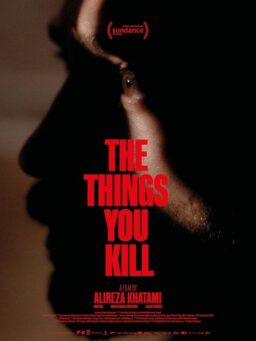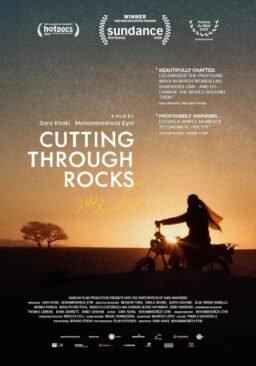Rachel Talalay got her start working for John Waters, directed seven episodes of “Doctor Who,” and is the only woman to direct a “Nightmare on Elm Street” film (“Freddy’s Dead”). All she knows about strange and scary—and fun—is on display in the delightful “A Babysitter’s Guide to Monster Hunting,” premiering this week on Netflix. In an interview with RogerEbert.com, Talalay talked about how “Doctor Who” inspired the “beautiful” aesthetic she goes for, making the story’s villain just scary enough, the details that make CGI monsters seem real, and the surprising book Roger Ebert was reading when she sat next to him on an airplane.
I love the look of the film. There can’t be anything more fun for a costume designer than a Halloween story and you were working with one of my favorites, Carrie Grace.
I love Carrie and I pulled really hard to have her on it because I had worked with her on “Doom Patrol,” and I just thought she was so visionary on “Doom Patrol” and got so many elements. I felt incredibly lucky to be able to bring her up to do this. It’s always a challenge with the kids to find a look where they don’t feel too much like “this is for this person and this is for that person,” and they have their own personalities without feeling like you’re just trying too hard. I always felt that Carrie had a really nice eye for that balance but of course the real fun of the costumes was the Grand Guignol and the Cat Lady so that’s really where Carrie got to excel.
And the Ice Queen costume!
And the Ice Queen costume! We had two Halloween parties. We had the kids’ party and we had the adult Halloween party and we had the third set of Halloween costumes for the townspeople. All of those were custom made. You don’t see it very well in the movie but the bubble dress for the girl who is flirting with Tommy is a fantastic, fantastic look.
The costumes are really fun but they are really character-revealing. For example, there is a line of dialogue at about how “the basic girl wears the cat costume” so it couldn’t be too cute. I thought she carried that off just exactly right.
Yes, so many details, so many details. There’s such openness to Carrie, which is so great. We went to a really small Comic-Con up here to get ideas for some of the home-made costumes within that party and I love that.

Tell me about the production design because that was just a knockout; every different space we were in was so imaginative.
Our production designer David Brisbin did an incredible job. The hardest was of course the Grand Guignol’s lair. He and I both come from this world where you don’t just design a space—it has to be a functional space. It has to make sense for what we’re doing and to expand on the whole storyline. So, his lair was underneath this gas plant. That wasn’t in the script, but our idea was that the Grand Guignol’s lair is underneath this gas plant because that’s how he gets the gases he needs to extract nightmares. That all came from David and then the design came out of that.
We wanted to make sure that the palace was something aspirational and not some rusty scupper awful place to be so we were looking for really visual grandiosity. I really like when you can make things very beautiful; that’s one of my sort of attempt to always be in “Doctor Who” world. How do I shoot this so that it has extra beauty and in it scariness? So it felt very important that the Grand Guignol’s palace had that golden glow and even though we were underground in a gas world that he’s turned it into something quite beautiful. The kid’s bedroom he created is completely like blown up fluffy cloud that he puts them in to extract these dreams and then it turns red and scary. So, everything has a form and function.

You have worked with adult scary stories, super, super, super scary stuff. So tell me how you re-calibrate for just the right amount of scary and funny for kids.
That’s the $64 million question—how do you know? There are two types of people in the world; there are the ones who want to be so challenged by scary and there are the ones who are scared of everything. So, you’re never going to hit where you can balance both. There will always be things that are too scary for some kids and certainly things that are not scary enough.
I believe from my experience with scary that mixing it with humor makes a huge difference. The shadow monster is creepy and scary, but the Toadies are completely comic relief, like crazy teenage boys popping around the bedroom kind of dirty, and it’s really [producer] Ivan Reitman who created this world of comedy and scary. I bow down to him for showing that. It used to be when I was younger in the business they said, “You can’t, that will never work, you can’t mix genres,” and of course now everything is mixed genre and that’s what makes it. Never make rules; rules are bullshit. A good movie is a good movie.
There was so much conversation about, “Is it too scary?” and the first test screening we did they said the opening was too scary and so we broke it up. But also the first thing we did was change the music because if you’ve got Tim Burtonesque music and the music’s lighter than that, it changes the whole feel. No music or super scary music will make you much more frightened but you can just say to them with the music, “Okay, there might be some scary images but we are here to have fun.” I’ve spoken to a bunch of kids who have seen it and parents, too and it was scary enough to be tantalizing but not traumatic. So that’s a sweet spot.

Your young actors were really remarkable considering that they were working with CGI characters who weren’t really there.
I find with kids it’s not as hard as it sounds now because kids are kind of sophisticated about the vocabulary of green screen. Once you show kids storyboards it’s not a mystery to them. We had a big stuffed Toady and we had a little person in a green suit acting like a Toady so they had different things to interact with. I had lots of images to show them to remind them what was going on but they still shrieked with delight when they saw the actual characters because of how much better the interaction was than they were expecting. A lot of the hard part is making sure that other things interact on set: does the bed cover move in the right way with the right weight and things like that. That’s very time-consuming and challenging and we had a huge amount of help from the visual effects and the special effects people, especially when we had the three Toadies who are different sizes and we only had one little person so we had to put eyeballs on his chest or deely bobbers to try and get the eye lines in the right places. There is a lot of technical stuff measuring for this camera angle, does this look right? It’s never as simple as where the eyes should be, there are always things that lenses do. People don’t really know or understand how much extra time goes into those kinds of elements.
And you told me you met, or almost met Roger?
I once sat next to him on an airplane from the Cannes Film Festival so maybe 1990, anyway it was with “Cry-Baby.” I sat next to him on an airplane from Cannes to Paris. I was trying not to be a jerk and be that movie person bothering him. He was was reading Asterix and Obelisk—in French! I just thought that was the coolest thing that he was reading it. I was like, “I’m just going to be cool and not say anything.”
You’ve done scary for adults and scary for kids; what scares you?
A lot of things scare me and that’s why I always say I was good at doing it. COVID scares me and the pandemic scares me and the economy; the whole world is scary at the moment. I’m claustrophobic as well. Weirdly, over the quarantine period I ended up watching quite a bit of horror and it’s all about the set up. It’s all about thinking that something’s in the house with you, that something scary is coming to get you.

